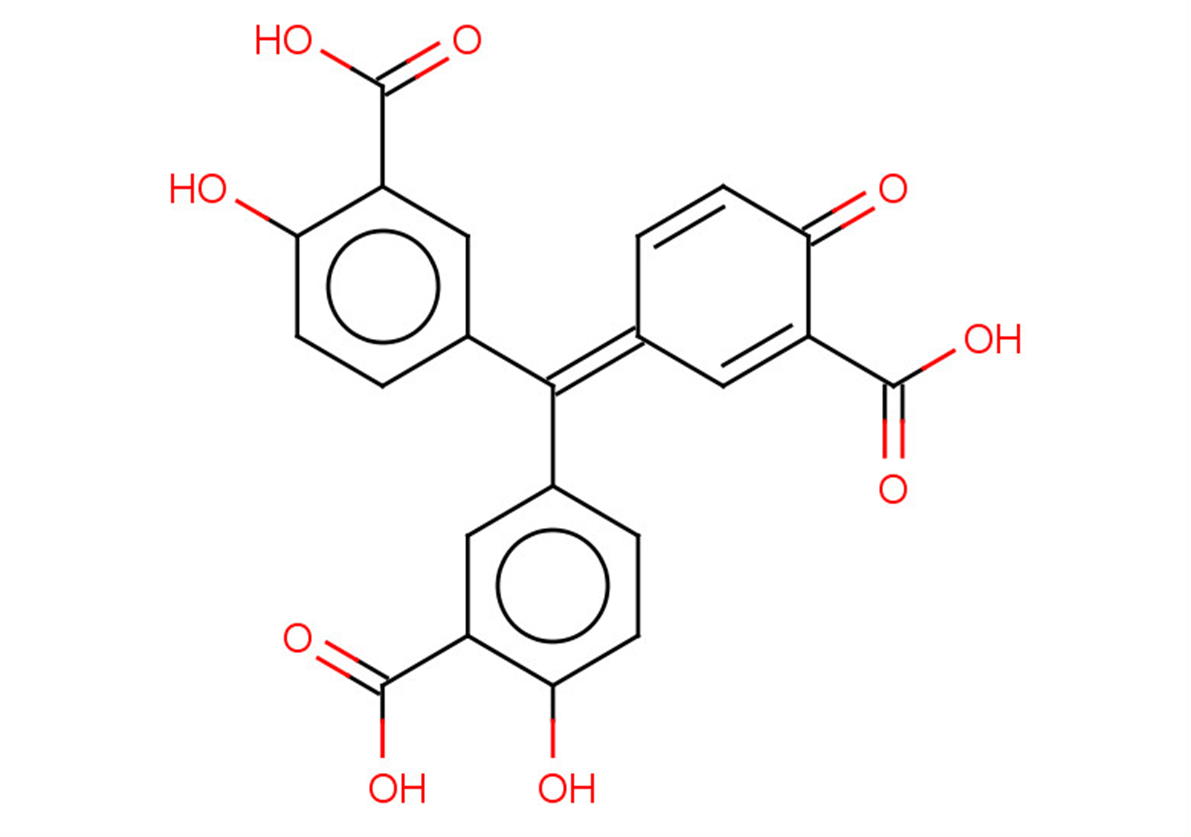
Aurintricarboxylic acid
CAS No. 4431-00-9
Aurintricarboxylic acid ( ATA | NSC-4056 | NSC 4056 | NSC4056 )
产品货号. M24401 CAS No. 4431-00-9
金三羧酸是拓扑异构酶和其他核酸酶的强抑制剂。
纯度: >98% (HPLC)
 COA
COA
 Datasheet
Datasheet
 HNMR
HNMR
 HPLC
HPLC
 MSDS
MSDS
 Handing Instructions
Handing Instructions
| 规格 | 价格/人民币 | 库存 | 数量 |
| 100MG | ¥348 | 有现货 |


|
| 200MG | ¥494 | 有现货 |


|
| 500MG | ¥786 | 有现货 |


|
| 1G | 获取报价 | 有现货 |


|
生物学信息
-
产品名称Aurintricarboxylic acid
-
注意事项本公司产品仅用于科研实验,不得用于人体或动物的临床与诊断
-
产品简述金三羧酸是拓扑异构酶和其他核酸酶的强抑制剂。
-
产品描述Aurintricarboxylic acid is a strong inhibitor of topoisomerases and other nucleases. It is a potent inhibitor of ribonuclease and topoisomerase II by preventing the binding of the nucleic acid to the enzyme.
-
体外实验Western Blot Analysis Cell Line:T98G, A172, GBM44 glioma cells Concentration:10 μM Incubation Time:0.5 hour, 1 hour, 2 hours Result:Abrogated TWEAK activation of downstream signals including phosphorylation of the NF-κB family member p65, Akt, and Src in all three GBM cell lines.
-
体内实验——
-
同义词ATA | NSC-4056 | NSC 4056 | NSC4056
-
通路Apoptosis
-
靶点Apoptosis
-
受体Apoptosis|MicroRNA|rP2X1|rP2X3|Topoisomerase II
-
研究领域——
-
适应症——
化学信息
-
CAS Number4431-00-9
-
分子量422.35
-
分子式C22H14O9
-
纯度>98% (HPLC)
-
溶解度DMSO:125 mg/mL (295.97 mM; Need ultrasonic)
-
SMILESOC(c(cc(cc1)C(c(cc2)cc(C(O)=O)c2O)=C(C=C2)C=C(C(O)=O)C2=O)c1O)=O
-
化学全称——
运输与储存
-
储存条件(-20℃)
-
运输条件With Ice Pack
-
稳定性≥ 2 years
参考文献
1.Liu T T , Yang T , Gao M N , et al. The inhibitory mechanism of aurintricarboxylic acid targeting serine/threonine phosphatase Stp1 in Staphylococcus aureus: insights from molecular dynamics simulations[J]. Acta Pharmacologica Sinica, 2019.
产品手册




关联产品
-
Oxypalmatine
Oxypalmatine 是在 Phellodendron amurense 中分离出来的。
-
3-O-Methylgallic aci...
3,4-二羟基-5-甲氧基苯甲酸比花青素更有效地减少 Caco-2 细胞的细胞增殖 (IC50 = 24.1 μM),并且可以在结肠癌在肠道中形成后提供针对结肠癌的保护。 3,4-二羟基-5-甲氧基苯甲酸抑制已知在结直肠癌中被激活的转录因子 NF-κB、AP-1、STAT-1 和 OCT-1。
-
2’-OMe-Guanosine
2'-OMe-鸟苷是由 tRNA 鸟苷-2'-o-甲基转移酶作用产生的修饰核苷。 2'-OMe-鸟苷具有一定的促凋亡作用。



 021-51111890
021-51111890 购物车()
购物车()
 sales@molnova.cn
sales@molnova.cn







